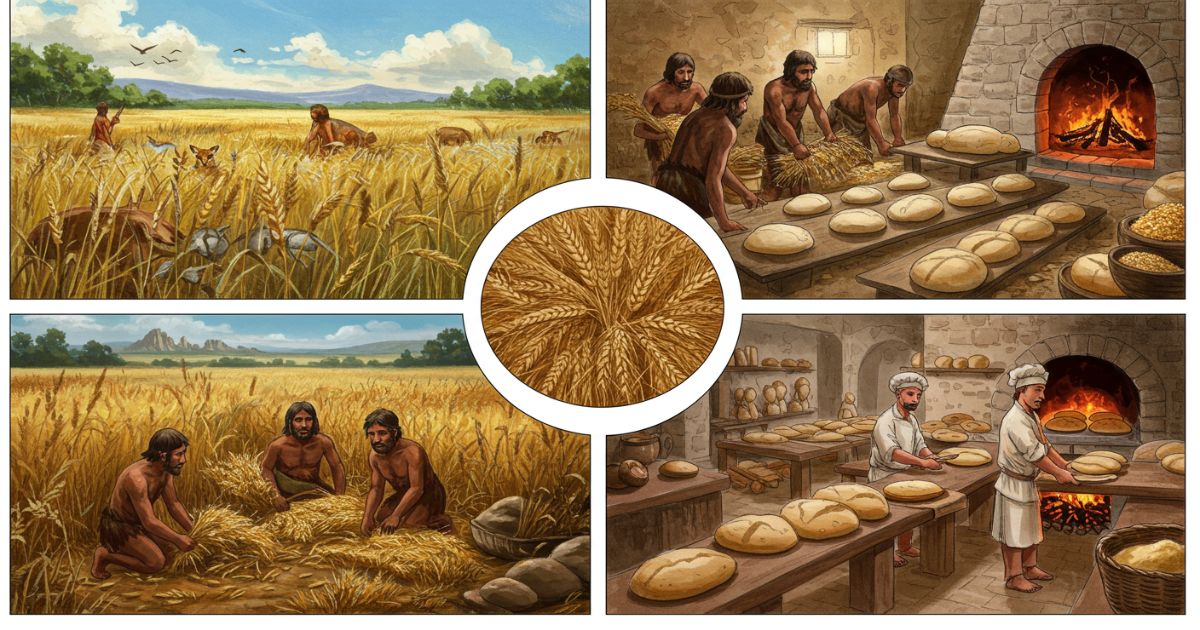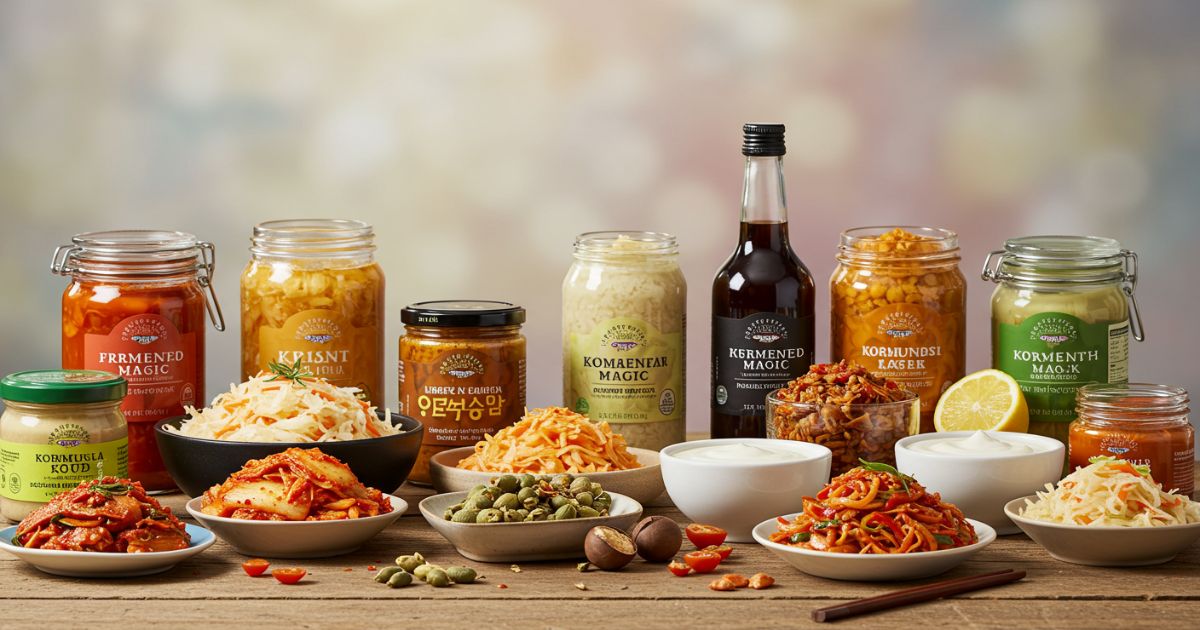Comfort foods hold a special place in our kitchens and memories. From creamy pasta dishes to freshly baked bread, these familiar recipes go beyond simple nourishment. They evoke nostalgia, warmth, and emotional well-being. But behind every comforting bite lies a tapestry of historical evolution and scientific magic. This article explores the hidden histories of our favorite comfort foods and reveals the surprising food science behind their irresistible appeal. You will explore ancient origins, cultural transformations, and the flavor chemistry that turns simple ingredients into soul-soothing meals. Finally, you will discover practical tips to enjoy these dishes more healthily without losing their comforting appeal.
Ancient Grains: From Wild Fields to Staple Loaves
Long before modern farming, humans gathered wild grains and ground them into coarse flour. Archaeological digs across the Fertile Crescent uncovered simple flatbreads dating back over ten thousand years. These primitive breads laid the groundwork for one of the most enduring comfort foods in existence. Early communities experimented with natural fermentation, unknowingly harnessing wild yeast to produce lighter, airier loaves.

As grain cultivation spread, so did regional variations. In Mesopotamia, barley and emmer wheat gave rise to dense barley breads. Ancient Egyptians refined leavening with sourdough starters, creating the first truly fluffy loaves. Meanwhile, rice domestication in East Asia sparked the evolution of rice porridge and rice cakes. Today, when we bite into a warm slice of sourdough or savor creamy rice pudding, we connect with agricultural innovations forged millennia ago.
Fermented Magic: Tangy Comfort from Around the World
Fermentation transforms humble ingredients into tangy, probiotic-rich comfort foods. Yogurt, kimchi, sauerkraut, and kefir all rely on friendly bacteria to develop complex flavors and health benefits. Originating as simple preservation methods, these fermented staples became culinary icons. In ancient India and Tibet, yogurt provided sustenance at high altitudes. In Germany and Eastern Europe, cabbage fermentation yielded sauerkraut that could last through bitter winters.

The tangy bite of fermented foods derives from lactic acid produced by bacteria breaking down sugars. This process not only extends shelf life but also enhances digestibility and nutrient availability. Modern science confirms that regular consumption of probiotic-rich foods supports gut health, immunity, and even mood regulation. When you enjoy a bowl of tangy kimchi or a dollop of creamy yogurt, you are embracing an age-old tradition backed by contemporary research.
Savory Classics: Stews, Soups, and One-Pot Wonders
Nothing comforts like a hearty stew or a steaming bowl of soup. Early humans discovered that combining meat bones, vegetables, and water over heat created nutrient-dense broths. Archaeological evidence from China and the Middle East reveals bronze cauldrons used for soup preparation over four thousand years ago. Medieval kitchens in Europe perfected slow-cooked stews, simmering meat and root vegetables for hours to extract deep flavors.
The secret to a truly comforting broth lies in collagen extraction. As animal bones and connective tissue break down under low heat, they release gelatin, creating a rich mouthfeel and silky texture. Combined with savory amino acids from cooked proteins, umami flavors emerge, providing a satisfying depth that soothes both body and soul. Whether it is a simple chicken soup or a complex beef bourguignon, these one-pot wonders trace their lineage to the dawn of cooking itself.
Dairy Delights: Creamy Comfort in Every Spoonful
Dairy products have long been associated with comfort and nourishment. From ancient nomadic herders churning sour milk into butter to medieval European monasteries aging wheels of cheese, dairy played a vital role in traditional diets. Creamy custards, cheese sauces, and butter-rich mashed potatoes showcase the velvety textures that make dairy so indulgent.

The science behind dairy comfort lies in the interaction of fats and proteins. Milk fat globules create a rich coating on the tongue, while casein proteins form a smooth network that traps water and air. When heated gently, this combination yields luxuriously creamy textures. Modern chefs and home cooks alike rely on these properties to craft sauces, puddings, and gratins that deliver both emotional warmth and satisfying mouthfeel.
Sweets and Baked Treats: From Ancient Cakes to Modern Desserts
Sweet treats have comforted humankind since antiquity. Early Egyptians sweetened bread with honey and figs. Greeks and Romans developed simple cakes called placenta and libum, baked offerings for gods and guests. The Middle Ages introduced sugar from trade routes, transforming pastries and confections.
Today’s baked goods rely on precise chemistry. Sugar caramelization adds color and complex flavors. Leavening agents like baking soda and baking powder produce carbon dioxide, creating tender crumb structures. Fats such as butter trap air during creaming, providing lift and flakiness. When you bite into a warm cookie or slice of cake, you experience centuries of culinary refinement and the delightful science that makes sweetness so pleasing.
Modern Comfort Foods: Reinvention in the 20th and 21st Centuries
The industrial revolution and modern food processing reshaped comfort foods. Canning, freezing, and instant mixes offered new convenience. Mid-century innovations brought TV dinners and boxed macaroni, while recent decades introduced gourmet twists on classic dishes.
Today, comfort food is as much about experience as it is about taste. Artisanal producers craft hand-rolled gnocchi and small-batch ice creams. Home cooks explore fusion cuisines that blend comfort staples with exotic flavors. Underlying it all remains a desire for familiar tastes that soothe and satisfy, even as culinary boundaries expand.
The Science of Comfort: Why These Foods Feel Good
Researchers have long studied why comfort foods evoke pleasure and alleviate stress. Several factors converge to create that warm, satisfied feeling:
- Neurotransmitter Release: Carbohydrate-rich foods boost serotonin levels, a neurotransmitter linked to mood regulation and relaxation.
- Dopamine Reward: Sugars and fats trigger dopamine pathways, providing a sense of reward and well-being.
- Texture and Mouthfeel: Creamy, viscous textures stimulate tactile receptors that signal comfort to the brain.
- Nostalgia and Memory: Familiar tastes connect us to positive past experiences, enhancing emotional comfort.
Combined, these sensory and psychological effects explain why reaching for a bowl of mac and cheese or a slice of warm pie can lift our spirits on a tough day. Modern food science continues to unravel how taste, aroma, and texture influence our emotions, revealing new ways to craft indulgent flavors that also support well-being.
Healthier Twists: Enjoying Comfort Foods Wisely
While comfort foods often carry a reputation for being heavy or indulgent, simple adjustments can make them more balanced without sacrificing taste:
- Use whole-grain flours and pastas to boost fiber and nutrients.
- Swap heavy creams for low-fat Greek yogurt or pureed vegetables in sauces.
- Incorporate more vegetables into stews, soups, and casseroles for added vitamins and volume.
- Lean proteins, such as turkey, fish, or plant-based alternatives, reduce the saturated fat content.
- Bake instead of frying when preparing snacks and side dishes.
These tweaks preserve the comforting flavors and textures you love while aligning with modern nutritional goals. By understanding the ingredients and techniques that drive comfort, you can create dishes that satisfy both palate and health needs.
Conclusion
Comfort foods are more than just meals; they are living relics of human history and laboratories of culinary science. From ancient grains and fermentation to modern flavor engineering, every bite tells a story of cultural exchange, technological progress, and the timeless appeal of taste. By exploring the hidden histories and underlying science, we gain a deeper appreciation for the dishes that warm our bellies and lift our spirits. With mindful ingredient choices and creative twists, you can continue to enjoy these beloved recipes in a way that nurtures both body and soul.
Visit Also Our Another Blog: The Fascinating Journeys of Everyday Objects









